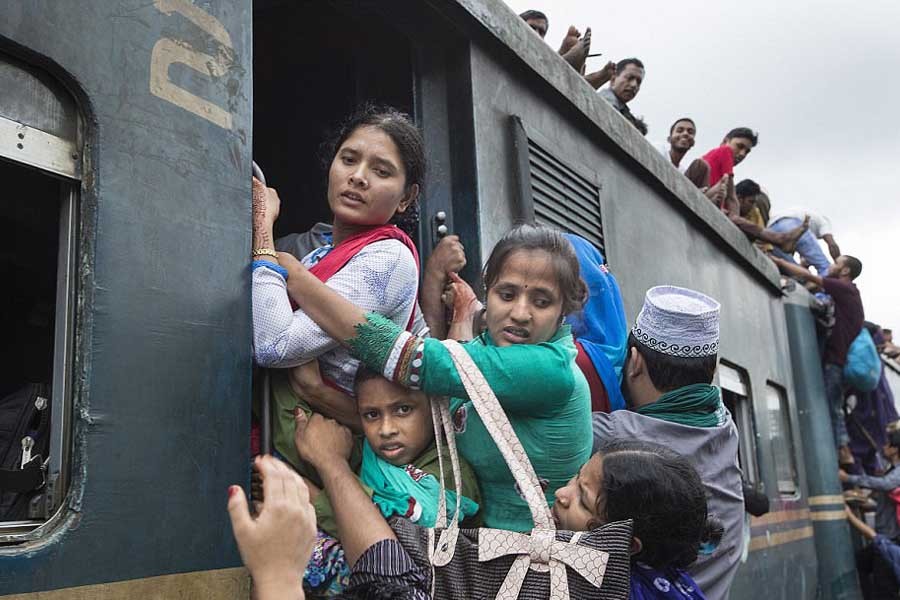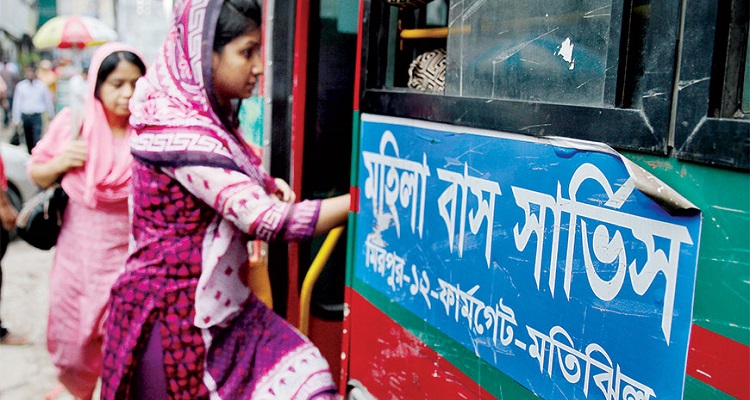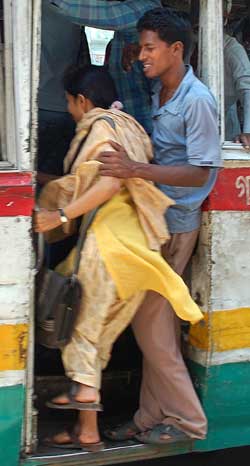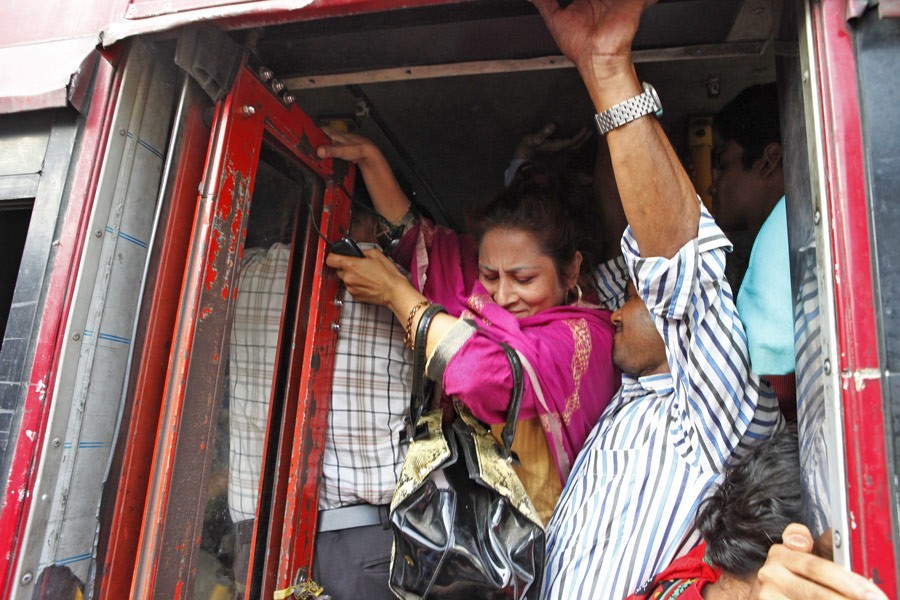The number of public buses in Dhaka City is insufficient, and they are frequently overcrowded, making them unusable for many people, especially the elderly, the disabled, and women. Early in the 1980s, Bangladesh Road Transport Corporation (BRTC) offered services for a “women only” bus (also known as a “women bus”) in consideration of the travel challenges faced by women. Nevertheless, after a few days of operation, it was quickly suspended. Later, BRTC attempted to start similar projects multiple times but failed for a variety of reasons. Last but not least, only five buses for a “women-only” bus service were introduced on one route in July 2008.



As opposed to modes like taxis, carpooling, or hired buses that strangers do not share without private arrangement, public transportation is a shared passenger transportation service that is available to the general public. Buses, trolleybuses, trams, rapid transit (subways, metros, undergrounds, etc.), ferries, and trolleybuses are examples of public transportation.
A woman travelling in Dhaka is almost constantly in danger of being sexually harassed, whether she’s walking down the street or taking public transportation. This threat affects daily movements, including how they choose to travel, when they travel, and who they travel with, and it is especially acute for the most marginalized women. Gender equity as a whole is significantly impacted by a woman’s capacity to travel around her city freely and safely.
Many girls and women feel scared walking alone along the street in cities around the nation. Many people will experience sexual harassment, abuse, and assault at some point in their lives simply because they are female. No barriers of wealth, class, color, ethnicity, or place of residence exist when it comes to violence against women and girls. Women’s contacts in their communities, on public transportation, at work, in schools, sports clubs, colleges, hospitals, and social organizations can frequently include physical, sexual, and psychological violence. Cities and their surroundings are full of unsafe places, such as abandoned streets, shadowy alleys, remote bus stations, and public restrooms.
Violence against women and girls abusers has more anonymity in urban settings. Even if not all women have experienced assault or rape, most have undoubtedly experienced anxiety at some point.
Many women may need to limit their activities or movements in Dhaka because they feel uncomfortable. Violence or the threat of violence is an effective means of restricting what women do. Major barriers to women’s empowerment include fear and a sense of insecurity.
Public transportation networks must reduce the likelihood of assault and threats against women. Additionally crucial is adequate lighting in residential regions and urban cores.
Violence against women and girls abusers has more anonymity in urban settings. Even if not all women have experienced assault or rape, most have undoubtedly experienced anxiety at some point.
Many women may need to limit their activities or movements in Dhaka because they feel uncomfortable. Violence or the threat of violence is an effective means of restricting what women do. Major barriers to women’s empowerment include fear and a sense of insecurity.
Public transportation networks must reduce the likelihood of assault and threats against women. Additionally crucial is adequate lighting in residential regions and urban cores.
Despite the women in this situation being the victims, society frequently tells them that by dressing in “indecent” ways, they encourage males to harass them. But what constitutes appropriate attire?
There is a widespread and enduring belief that clothing may be related to assault. However, research indicates that women with docile personalities who choose layering clothing, long sleeves and slacks, and high necklines are actually more likely to experience sexual assault or rape. In addition, every day in public transportation, mostly on buses, young girls and women of all ages are sexually attacked or verbally abused, and most of the time no one is there to intervene.
According to a national daily, the Dhaka Metropolitan Police detained a bus driver and his assistant on January 23 in connection with an alleged attempt at sexual assault against a female student at Dhaka University on a Dewan Paribahan bus travelling between Azimpur and Natun Bazar early in the morning. After the bus drivers forced other passengers to disembark and kept the victim inside, she jumped off the moving bus to save herself.
Public services in the context of violence against women in public places, a research paper states that at least 42.5 percent of female service seekers encounter rude behaviour from service providers at hospitals. In comparison, 50 percent of women encounter inappropriate touches at markets, 30 percent of women reported experiencing eve-teasing at police stations, and 35 percent reported suffering from such violence.
According to the Dhaka Urban Transport Development Study, 20.7% of women who previously took public transportation stopped doing so out of concern for harassment and sexual assault. Bangladesh already has 35.6 percent of working women, and that percentage is expected to rise. However, the everyday harassment they experience as a result of the transportation system is making their lives miserable.
For women only, Bangladesh Road Transport Corporation now runs 16 single- and double-decker buses on 13 city routes, making just two journeys each day—one in the morning and one in the afternoon. Female passengers and advocates for women’s rights have criticized the service as being incredibly inadequate and encouraged the relevant authorities to add extra seats for female passengers in major public buses to ameliorate the situation.
Additionally, the majority of city buses and minibuses have been upgraded to include extra seats next to the engines. While male passengers frequently occupy seats intended for women, children, the elderly, and persons with impairments, these unhealthy seats are designed for female passengers.
It is safe to assume that attire, whether “decent” or “indecent,” has nothing to do with what is happening with women on public transportation. Instead, the system is to blame. The authorities ought to punish those who commit such crimes more severely.
Now is the moment to alter our perspectives to ensure our society’s success.

